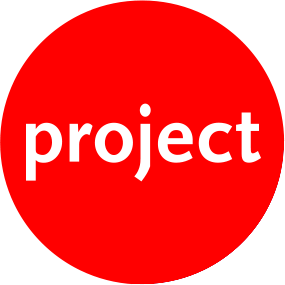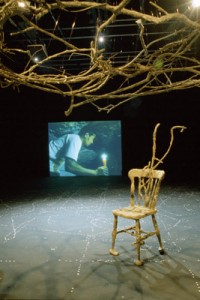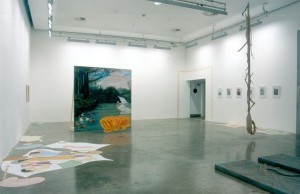Project Arts Centre presents
City Park was an exhibition of contemporary art from India, featuring a group of artists from the southern Indian city of Bangalore. The artists in the show created open, connective spaces in their work, combining aspects of the city with references to Indian and Western art history, film, nationalist politics, colonialism, post colonialism, artisan traditions and the new economy. The exhibition took place in Dublin with a number of artists coming to Project to make new works in the gallery. The show speculated on the possibility of links between the two cities – both real and imagined, proposing a space in which these links could occur.
Post- Independence Bangalore was a stable, prosperous and temperate city. However since the mid-eighties, when India’s economy opened up to world trade, it has been the site of rapid development, mushrooming exponentially to become South Asia’s fastest growing urban area. The region’s position within international time zones and the presence of an educated, English speaking work force has placed Bangalore at the centre of a global IT and services industry. The new wealth created has impacted on traditional values, provided radical new possibilities for living, eroded the city’s environment and created economic disparities.
Dublin shares a number of parallels with Bangalore – such as the twin phenomena of colonialism and globalisation, which have appeared as factors in the development of both cities. Dublin has its colonial architecture, botanical gardens and contentious public monuments. It also has a burgeoning new economy that is transforming the physical and cultural map of the city bringing with it homogeneous architecture, patterns of work, leisure and consumption. Today the two cities are in a state of flux galvanised by the logic of capital, and compete directly in the global market place for jobs and investment.
To create a context for the exhibition, Lyric FM broadcast a series of features including radio essays and conversations that focused on the links and parallels that exist between Dublin and Bangalore. This series covered the related Independence movements, post colonial studies, the influence of Irish writing on Indian novelists, the hybridisation of the English language and methods and materials used by two artists from both countries. It also included a recorded feature linking Lyric FM with a radio station from Bangalore. Participants included Sheela Gowda, Richard Creed, Daniel Jewesbury, Girish Karnad, Eva Rothschild, Irit Rogoff and Radio City 91 FM. The talks went out for three weeks as part of Artszone Lyric FM’s weekly arts magazine.
Sheela Gowda’s floor based sculpture used material from which Agarbathi (incense sticks) are made. The paste was sculpted into lines and forms and displayed on two stretchers. The work was then been ignited leaving the residue of the paste as ash. NS Harsha painted a series of sleeping figures entitled ‘Sleep is no Protest on the floor of the gallery and around the building. These reflect the commonplace sight in India, of people sleeping in public spaces such as railway stations and parks. Valsan Koorma Kolleri collected materials from around Project and further afield in the city of Dublin. Using the dead branches of trees, drift wood, copper pipes, found objects and paper pulp, he constructed a series of free form sculptures which are suspended from the gallery ceiling. Pusphamala N in collaboration with Clare Arni recreated Ravi Varma’s portrait of Lakshmi, the goddess of wealth. The 19th Century Indian artist Ravi Vartma was the first to paint scenes from Indian mythology using European painting techniques. For this project, the two worked with local artisans on sets and costumes, some of which where displayed alongside the photographic works.
Ramesh Kalkur’s photographs of the Victoria Monument in Cubbon Park depict the story of the statue’s missing finger. By painting over the photographs he creates a series of satirical cartoon- like images which subvert the statues original function. The large-scale banner in the foyer displays a collage of prominent public statues in Bangalore which have been juxtaposed to create new relations between them. * MS Umesh’s work ‘Writing in the dark, scene 31‘ addresses the movement of illegal immigrants from India across Europe. The text around the door in the gallery was a spoken testimony by one such immigrant, while the film in the Cube showed the artist himself travelling into a cave temple in Bangalore and emerging out of the Port Tunnel construction site in Dublin.
Christoph Storz made a large-scale floor painting in the Cube, which corresponded to the overhead structure present in the room. The work takes its inspiration from Rangoli drawings, made from powder daily by many Indian women at the threshold of their houses. Avinash Veeraraghavan documented the city with his camera, shooting at random. For the exhibition he selected images of what he describes as the “virtual city” taken from cable television. These were arranged in an abstract line drawing from the floor to the ceiling of the gallery. As an antidote to the inflated rhetoric circulating around Bangalore’s IT industry, Kiran Subbaiah produced a computer programme that unleashes a virus, which plays havoc with software. The CD can be purchased from the gallery and used at home by visitors at their own risk.
* Works by Ramesh Kalkur were commissioned by Pushpamala N for the exhibition “Sthala Puranagalu”, Bangalore, India
Credits
Exhibiting Artists
Sheela Gowda, NS Harsha, Valsan Koorma Kolleri, Pusphamala N x Clare Arni, Ramesh Kalkur, MS Umesh, Christoph Storz, Avinash Veeraraghavan, Kiran Subbaiah
Disclaimer
Closed Sundays & Bank Holidays


